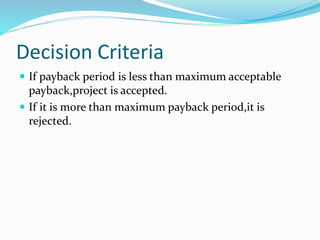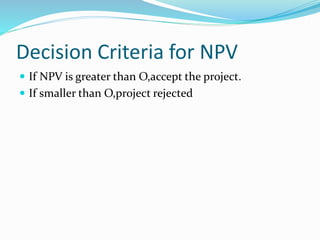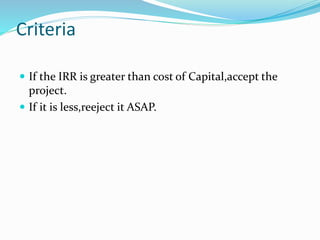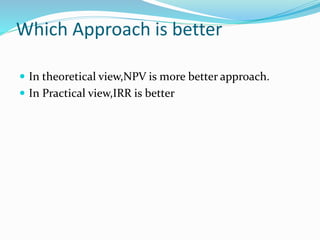Capital Budgeting techniques..
- 1. Capital Budgeting Techinuqes ’éŚ Use to analyze whether to accept or to reject the project. ’éŚ Process in which business determines and evaluates investments that are large in nature
- 2. Techniques ’éŚ Payback Period ’éŚ NPV ’éŚ IRR
- 3. ’āśLength of time required to recover cost of an investment. ’āśUsed to evaluate proposed investments. ’āśFormula for annuity case.
- 4. Decision Criteria ’éŚ If payback period is less than maximum acceptable payback,project is accepted. ’éŚ If it is more than maximum payback period,it is rejected.
- 5. Net Present Value(NPV) ’éŚ Minimum return that must be earned on project. ’éŚ Present value of all cashflows equals to O. ’éŚ Formula:Present value of cashflows-initial investment.
- 6. Decision Criteria for NPV ’éŚ If NPV is greater than O,accept the project. ’éŚ If smaller than O,project rejected
- 7. Internal Rate of Return ’éŚ It equates NPV of investement opportunity with O. ’éŚ Widely used technique.
- 8. Criteria ’éŚ If the IRR is greater than cost of Capital,accept the project. ’éŚ If it is less,reeject it ASAP.
- 9. Which Approach is better ’éŚ In theoretical view,NPV is more better approach. ’éŚ In Practical view,IRR is better








